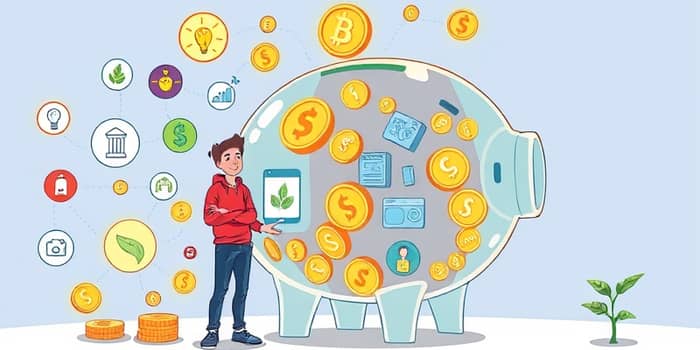
In an era of economic change and digital innovation, traditional saving methods no longer suffice. To build real financial resilience, we must adopt advanced strategies that leverage technology, sustainability, and strategic planning.
Every journey begins with clarity. Tracking income and expenses lays the groundwork for informed decisions. Modern apps can simplify this process and ensure you allocate resources where they matter most.
Then, set automatic transfers to savings each payday. By removing manual intervention, you eliminate missed contributions and resist impulse spending. This financial autopilot frees your mental bandwidth for higher-level planning rather than routine tasks.
Many households overlook recurring charges that quietly drain budgets. Conduct a quarterly audit of subscriptions, memberships, and trials. You might discover dozens of small fees adding up to hundreds of dollars per year.
Regularly revisiting these commitments can yield immediate, risk-free savings.
Financial technology offers tools that turn everyday spending into a growth opportunity. take advantage of cash back apps and reward aggregators to earn back a portion of your purchases. Pair these with high-yield checking or savings platforms that meet deposit requirements for elevated interest rates.
For added motivation, join community savings challenges—like increasing your weekly deposit by a dollar each week—to introduce accountability and gamification to your plan.
Reducing waste and reusing goods can slash recurring expenses. Investing in reusable household items pays back over time and aligns with eco-friendly values.
Learning basic DIY skills—like patching drywall or changing a faucet—delivers both cost savings and a sense of accomplishment. Always assess complexity and safety before tackling advanced repairs.
Utility bills are a prime area for consistent savings. Start by upgrade to energy-efficient home appliances bearing the Energy Star label. Enhancing insulation, sealing windows, and installing programmable thermostats can reduce heating and cooling expenses by up to 20%.
Take advantage of federal incentives, such as a 30% tax credit on qualified heat pump installations (capped at $2,000), to offset upgrade costs and accelerate payback timelines.
Debt often stifles saving capacity through interest accumulation. By making extra or lump-sum payments on high-interest loans, you reduce lifetime interest expenses—paying off a $5,000 auto loan early can save roughly $250 in interest alone.
Adopt a debt hierarchy: tackle the highest APR balances first, then snowball freed funds toward smaller debts. This dual approach maximizes financial leverage and psychological momentum.
Not all purchases require brand-new price tags. For items used infrequently, explore local resale shops, online marketplaces, or borrowing within your community. This strategy buy secondhand or borrow items fosters circular economies and strengthens neighborhood bonds.
Organize swap meets or tool libraries to share resources, reducing individual costs while promoting sustainability.
Beyond basic savings accounts, consider specialized instruments that lock in higher rates or structured returns. Certificates of Deposit (CDs) offer fixed APYs for term commitments, discouraging premature withdrawals and ensuring predictable growth.
utilize high-yield checking and savings accounts by meeting simple deposit and transaction criteria to earn boosted interest rates on idle cash.
Food expenses can balloon without conscious effort. By plan weekly meals and grocery lists, you control costs, reduce waste, and improve nutrition. Buy staples in bulk during sales and repurpose leftovers into new dishes to stretch every dollar further.
Inflation, tariff changes, and shifting policies demand agile saving approaches. Maintain flexibility by diversifying saving vehicles, adjusting contribution levels, and staying informed about emerging incentives.
Embrace short-term no-buy challenges—like a month of zero discretionary spending—to reset habits and uncover hidden spending triggers.
Savings is not a set-and-forget endeavor. Schedule quarterly reviews to analyze progress, recalibrate goals, and integrate new tactics as life evolves—whether facing a career shift, family expansion, or home purchase.
By treating saving as a continuous, adaptive practice, you ensure sustainable growth and resilient financial health for years to come.
Embrace these advanced saving techniques and watch your wealth horizon expand beyond the humble piggy bank—toward a future of freedom, security, and purposeful abundance.
References













